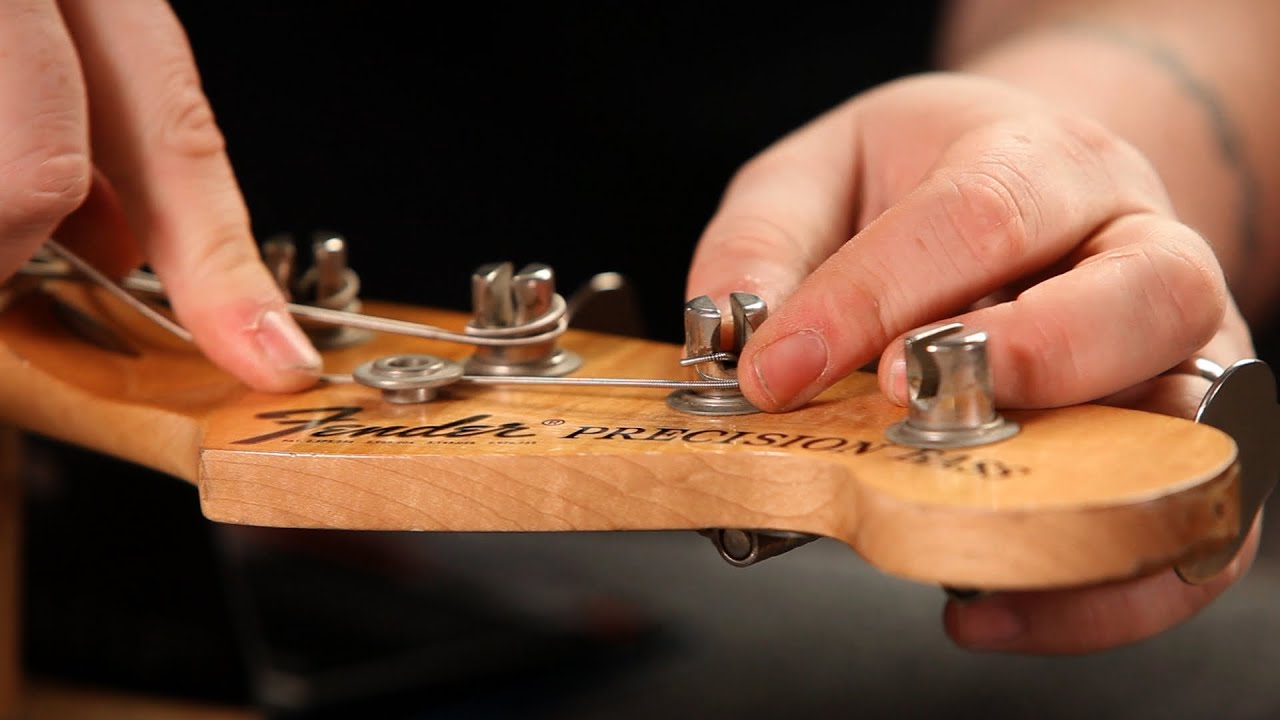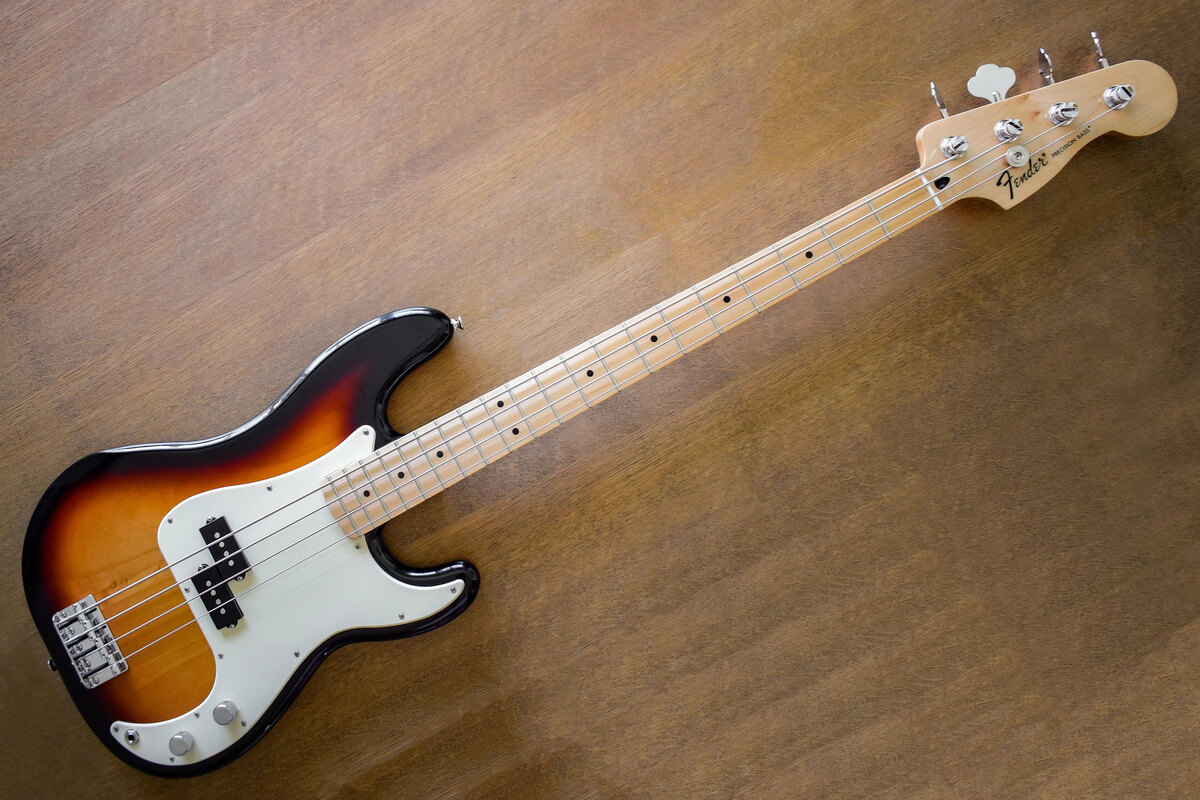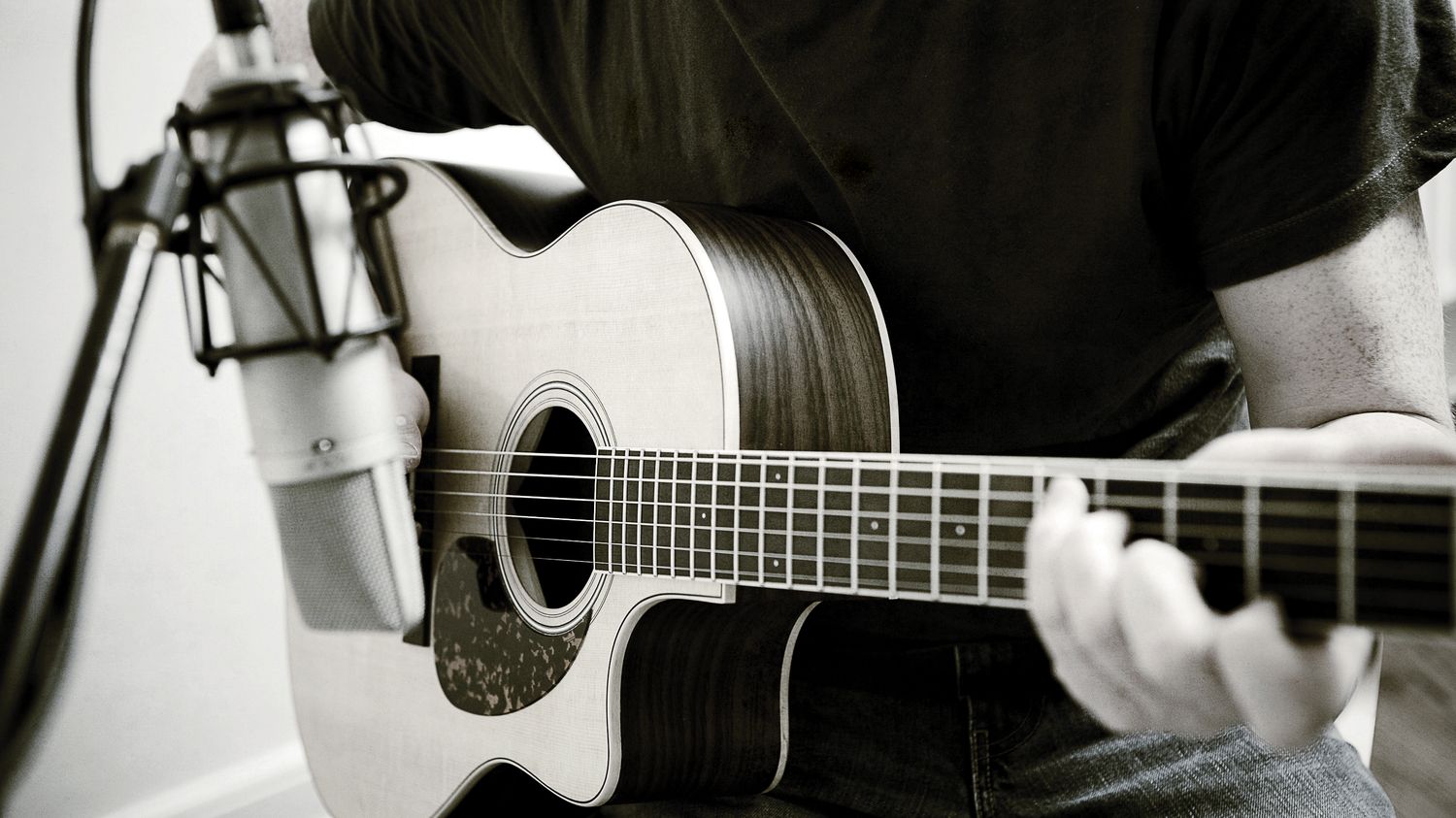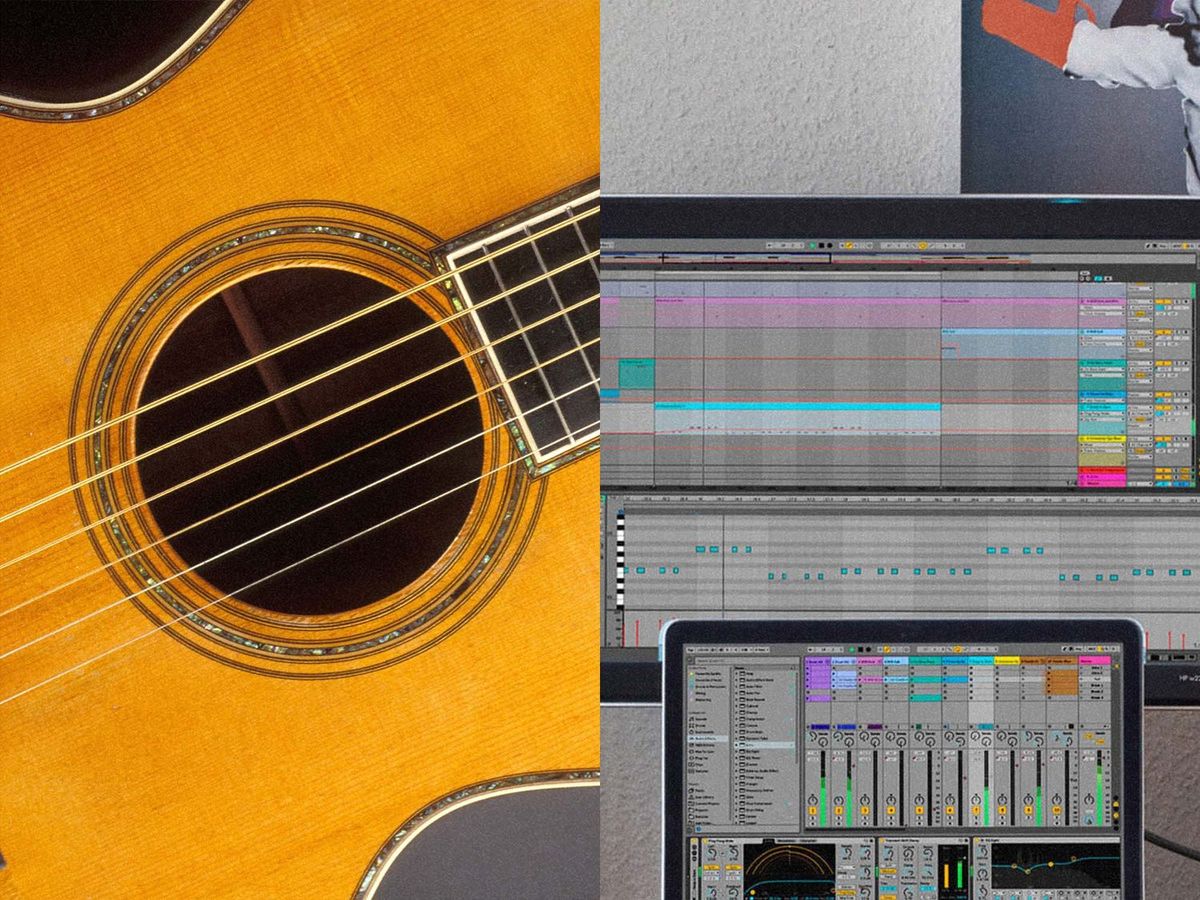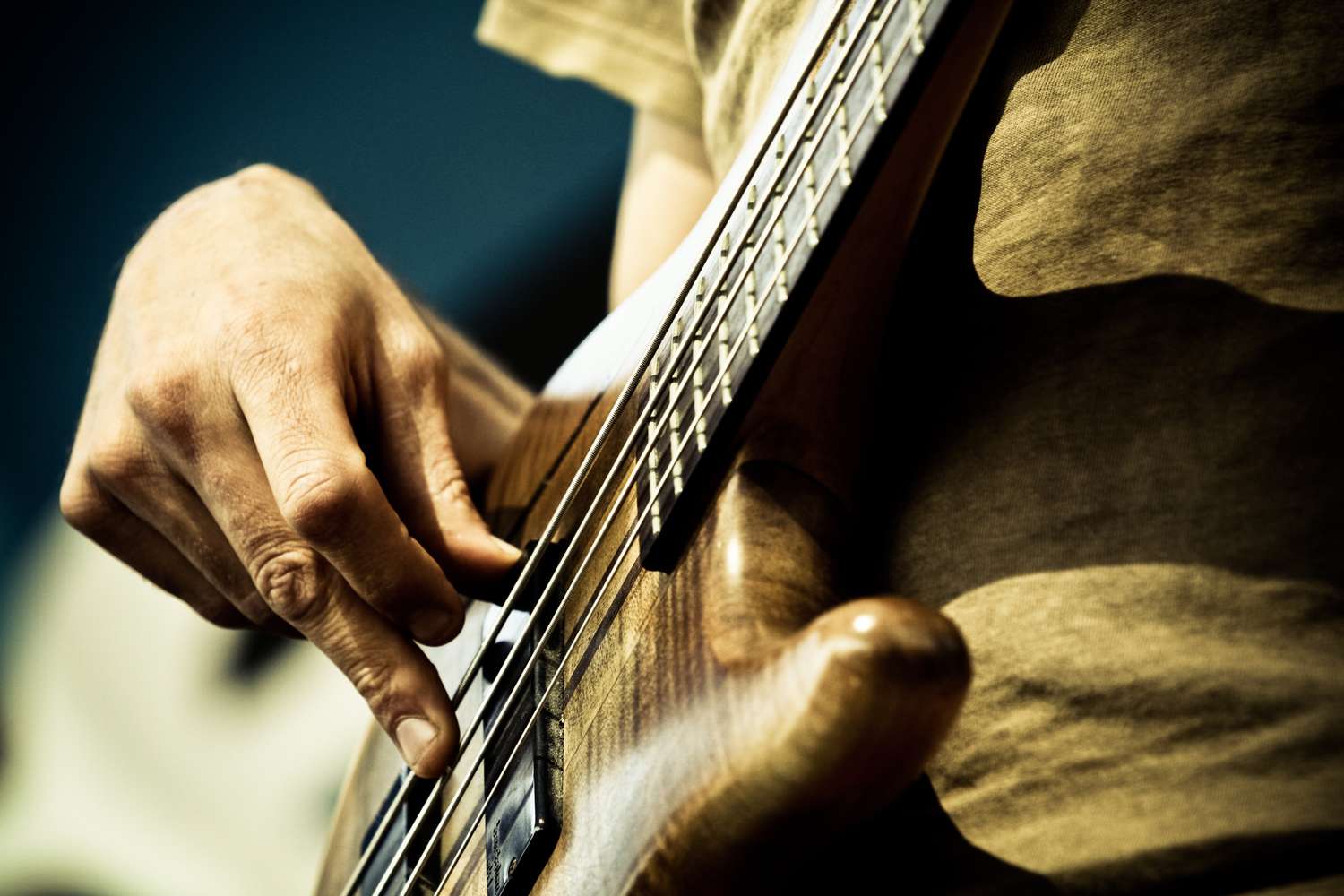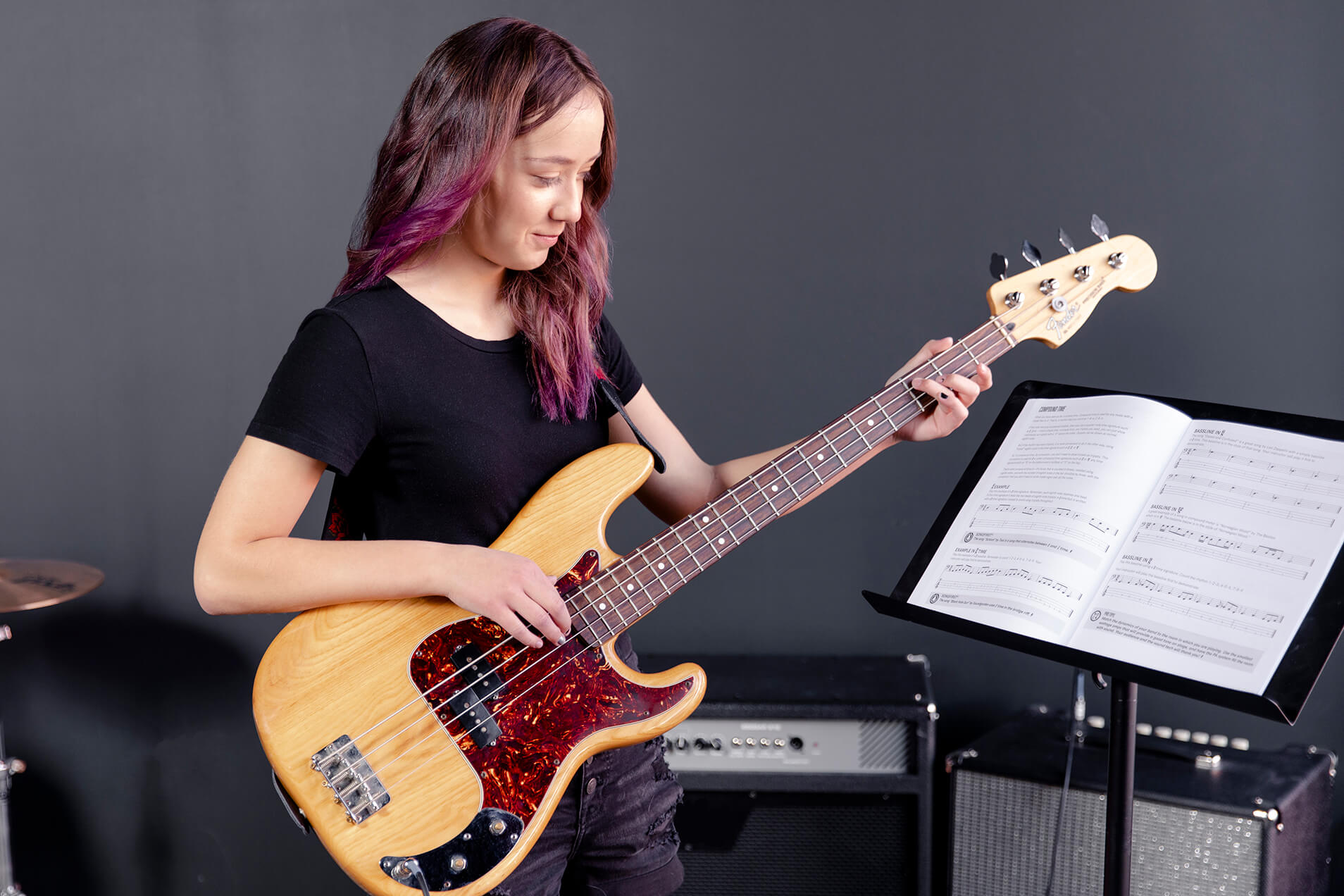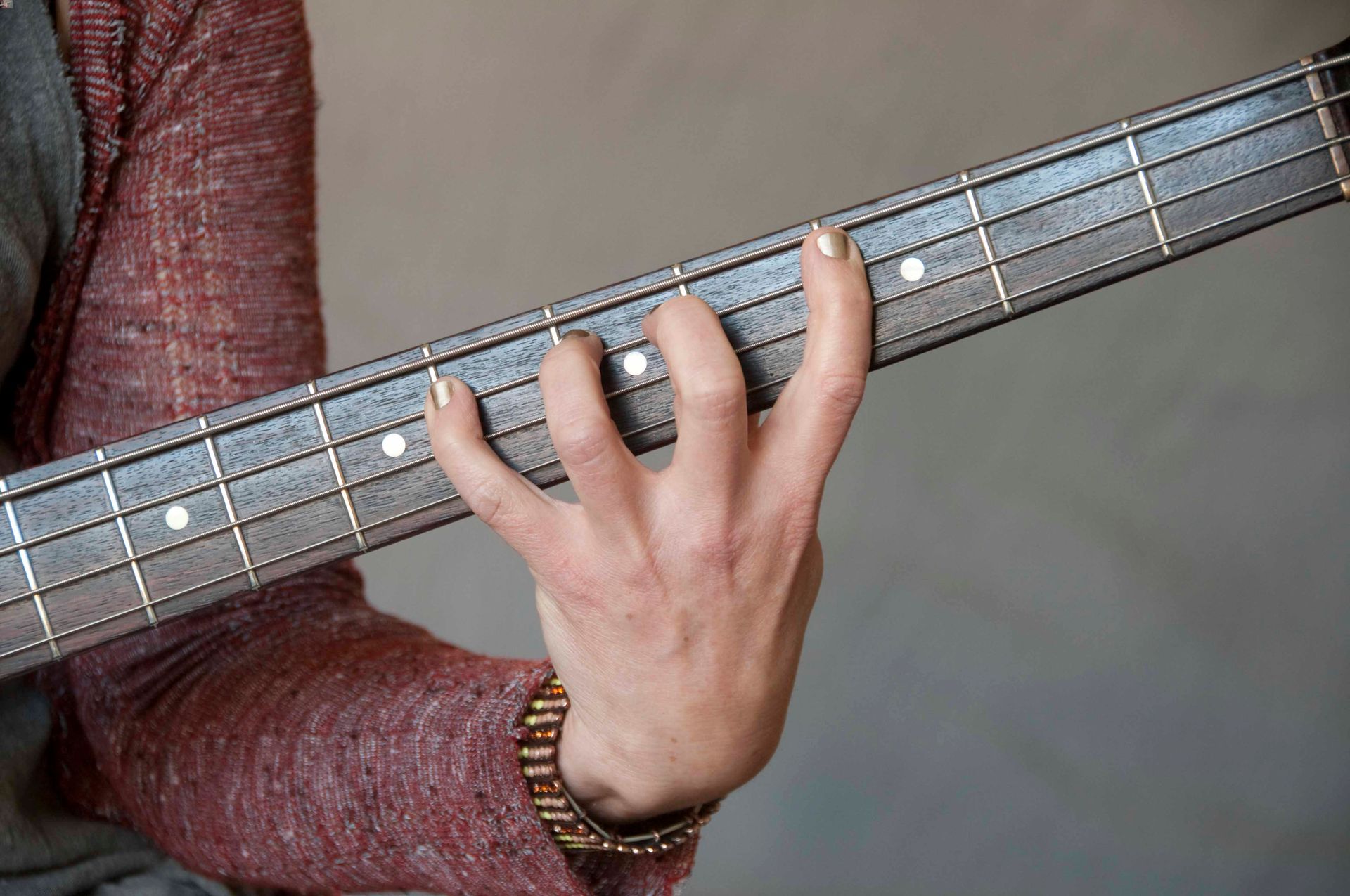Home>Instruments>Guitar>How To Record A Bass Guitar


Guitar
How To Record A Bass Guitar
Modified: February 16, 2024
Learn how to properly record a bass guitar with our expert tips and techniques. Enhance your guitar recording skills today!
(Many of the links in this article redirect to a specific reviewed product. Your purchase of these products through affiliate links helps to generate commission for AudioLover.com, at no extra cost. Learn more)
Table of Contents
Introduction
So, you've mastered the art of playing the bass guitar and now you're ready to take it to the next level by recording your own bass lines. Whether you're a seasoned musician or just starting out, capturing the perfect bass sound can be a rewarding and challenging experience. In this guide, we'll explore the essential steps to help you achieve professional-quality bass recordings right from the comfort of your own home studio.
Recording a bass guitar involves a blend of technical know-how, creativity, and a keen ear for sound. The process encompasses setting up your equipment, positioning the microphone, choosing the right recording techniques, and implementing effective tips to capture the best possible sound. By understanding and mastering these elements, you can unlock the full potential of your bass guitar recordings.
Throughout this guide, we'll delve into the intricacies of recording a bass guitar, offering valuable insights and practical tips to elevate your recording sessions. Whether you aim to lay down solid basslines for your band's latest track or simply want to document your musical ideas, the knowledge and techniques shared here will empower you to produce professional-grade bass recordings.
With the right approach and a sprinkle of creativity, you can harness the power of modern recording technology to capture the deep, resonant tones of the bass guitar with precision and finesse. So, let's embark on this sonic journey and unravel the secrets of recording the bass guitar like a pro.
Setting Up Your Equipment
Before diving into the recording process, it’s crucial to ensure that your equipment is properly set up to capture the rich and dynamic sound of the bass guitar. Here’s a rundown of the essential gear you’ll need:
- Bass Guitar: Select a high-quality instrument that suits the tonal characteristics you aim to achieve. Whether you prefer the warm thump of a traditional P-Bass or the modern punch of a 5-string active bass, choosing the right instrument sets the foundation for a great recording.
- Amplifier: A reliable bass amplifier is essential for shaping and amplifying the sound of your instrument. Whether you opt for a classic tube amp for its warmth or a solid-state amp for its clarity, ensure that it complements your bass guitar and delivers the desired tone.
- Microphone: Select a high-quality microphone suitable for capturing the low frequencies and nuances of the bass guitar. Dynamic microphones like the Shure SM57 or large-diaphragm condenser mics such as the AKG C414 are popular choices for recording bass due to their ability to handle high sound pressure levels and reproduce the instrument’s full-bodied sound.
- Audio Interface: An audio interface serves as the bridge between your analog equipment and digital recording software. Choose an interface with sufficient inputs to accommodate your microphone and any additional recording gear, ensuring high-resolution audio capture.
- Recording Software: Utilize digital audio workstations (DAWs) such as Pro Tools, Logic Pro, or Ableton Live to capture and manipulate your bass recordings with precision. Familiarize yourself with the software’s features to optimize your recording workflow.
Once you’ve gathered your equipment, it’s time to set up your recording space. Select a room with acoustics that complement the deep tones of the bass guitar, minimizing unwanted reflections and reverberations. Additionally, consider using bass traps and acoustic panels to optimize the sound within your recording environment.
Position your amplifier in a suitable location within the room, taking into account the amp’s proximity to the microphone and its interaction with the room’s acoustics. Experiment with different amp placements to find the sweet spot that captures the desired tonal characteristics while minimizing unwanted room coloration.
By ensuring that your equipment is properly set up and optimized for bass recording, you’ll lay a solid foundation for capturing the full sonic spectrum of the instrument with clarity and depth.
Positioning the Microphone
When it comes to recording the bass guitar, the placement of the microphone plays a pivotal role in capturing the instrument’s rich timbre and low-end resonance. A well-positioned microphone can accentuate the nuances of the bass while minimizing unwanted artifacts, resulting in a balanced and impactful recording. Here are key considerations for positioning the microphone:
- Distance from the Amplifier: Position the microphone at a suitable distance from the bass amplifier to capture the full spectrum of sound while avoiding distortion. Placing the microphone too close to the amp may result in an overwhelming low-end response, whereas positioning it too far can diminish the instrument’s presence in the recording.
- Microphone Placement: Experiment with microphone placement to find the optimal position that captures the instrument’s tonal characteristics. Placing the microphone near the bass speaker’s cone can yield a punchy and focused sound, while positioning it slightly off-axis can introduce subtle variations in the tonal texture.
- Consider the Room Acoustics: Take into account the room’s acoustics when positioning the microphone. Be mindful of potential reflections and standing waves that may impact the captured sound. Adjust the microphone placement to minimize undesirable room coloration while enhancing the natural resonance of the bass guitar.
- Utilize Multiple Microphones: For more advanced recording setups, consider using multiple microphones to capture different aspects of the bass sound. Pairing a dynamic microphone close to the bass cabinet with a large-diaphragm condenser mic placed farther away can provide a blend of direct and ambient tones, offering greater sonic versatility during the mixing stage.
As you position the microphone, it’s essential to listen attentively to the sound being captured and make adjustments based on the desired sonic characteristics. Pay close attention to the instrument’s articulation, low-end presence, and overall tonal balance, ensuring that the microphone placement complements the unique sonic qualities of the bass guitar.
By carefully positioning the microphone and leveraging its proximity to the bass amplifier, you can capture the full spectrum of the instrument’s sound with precision and clarity, setting the stage for a compelling bass recording.
Choosing the Right Recording Techniques
When it comes to recording the bass guitar, employing the appropriate recording techniques is essential for capturing the instrument’s sonic nuances and translating its expressive qualities into a compelling audio recording. Here are some key recording techniques to consider:
- Direct Input (DI) Recording: Utilizing a DI box to capture the bass guitar’s signal directly into the audio interface offers a clean and controlled approach to recording. DI recording is ideal for capturing the instrument’s fundamental frequencies and harmonic richness, providing a solid foundation for further processing and mixing.
- Mic’ing the Amplifier: Positioning a microphone in front of the bass amplifier’s speaker cabinet allows you to capture the amp’s unique tonal characteristics and the interaction between the speaker and the room. This method adds depth and character to the recording, leveraging the amplifier’s sonic imprint to shape the bass sound.
- Layering Multiple Takes: Recording multiple takes of the bass part and layering them in the mix can enhance the instrument’s presence and create a fuller, more dynamic sound. Experiment with layering different performances to add depth and texture to the bass track, enriching the overall sonic landscape of the recording.
- Utilizing Compression: Applying compression during the recording process can help control the dynamics of the bass guitar, ensuring a consistent and well-defined sound. By carefully setting the compressor parameters, you can tame transient peaks and enhance the sustain of the instrument, resulting in a more polished and cohesive bass recording.
Each recording technique offers unique sonic benefits, and the choice of approach depends on the desired sound and the specific characteristics of the bass part. Whether aiming for a clean and articulate bass tone or a more aggressive and driven sound, selecting the right recording technique is crucial in capturing the essence of the instrument.
Experimenting with different recording techniques allows you to explore the sonic possibilities of the bass guitar, empowering you to craft recordings that resonate with depth, clarity, and musicality. By honing your recording techniques, you can unlock the full potential of the bass guitar as a foundational element in your musical productions.
Tips for Recording Bass Guitar
Recording the bass guitar demands attention to detail and a nuanced approach to capturing its full sonic spectrum. Here are some valuable tips to elevate your bass recording sessions and achieve professional-quality results:
- Focus on Clarity and Definition: Prioritize clarity and definition in your bass recordings by ensuring that each note is articulate and well-defined. Pay attention to the instrument’s attack and release characteristics, adjusting your playing technique and signal chain to achieve a clean and precise sound.
- Optimize the Low-End Balance: Strike a balance between the low frequencies of the bass guitar to ensure a solid foundation without overpowering the mix. Experiment with EQ settings and compression to sculpt the low-end response, allowing the bass to cut through the mix while maintaining a tight and controlled sound.
- Embrace Dynamic Playing: Explore the expressive potential of the bass guitar by incorporating dynamic playing techniques. Varying your playing intensity and articulation adds depth and emotion to the recording, infusing the bass performance with a natural and dynamic character.
- Monitor in Context: When recording bass guitar, monitor the instrument’s sound in the context of the overall mix to gauge its impact and interaction with other elements. This ensures that the bass sits well within the sonic landscape and complements other instruments without overpowering or getting lost in the mix.
- Consider String Selection: Experimenting with different types of bass strings can yield varied tonal characteristics, allowing you to tailor the sound to suit the musical context. Whether opting for roundwound, flatwound, or other string types, the choice of strings can significantly influence the instrument’s sonic profile.
- Collaborate with the Drummer: Establish a cohesive rhythm section by collaborating with the drummer during the recording process. Syncing the bass guitar with the drum patterns and grooves enhances the rhythmic foundation of the music, creating a tight and propulsive sonic framework.
By implementing these tips, you can refine your approach to recording bass guitar and unlock its full potential as a driving force in your musical productions. Embrace experimentation, attentive listening, and a commitment to sonic excellence to capture the depth, resonance, and musicality of the bass guitar with finesse and artistry.
Conclusion
Recording the bass guitar is a nuanced and rewarding endeavor that requires a blend of technical proficiency, creative expression, and a keen understanding of sound capture. By following the essential steps outlined in this guide, you can embark on a sonic journey that elevates your bass recordings to professional standards.
From setting up your equipment to positioning the microphone, choosing the right recording techniques, and implementing valuable tips, each facet of the recording process contributes to the overall sonic character and impact of the bass guitar in your productions. Embracing the nuances of bass recording empowers you to sculpt deep, resonant tones that anchor the musical foundation with clarity, depth, and musicality.
As you navigate the intricacies of bass recording, remember that attentive listening, experimentation, and a commitment to sonic excellence are your allies in capturing the full expressive range of the instrument. Whether you’re laying down solid grooves for a band project or crafting captivating basslines for your compositions, the knowledge and techniques shared in this guide equip you to harness the sonic potential of the bass guitar with precision and finesse.
Ultimately, the art of recording the bass guitar is a dynamic and evolving pursuit, shaped by your creativity, technical acumen, and passion for sonic innovation. Embrace the process, trust your instincts, and let the deep, resonant tones of the bass guitar resonate with authenticity and impact in your recordings.
With each recording session, strive to capture the essence of the bass guitar in all its expressive glory, enriching your musical creations with the soulful and rhythmic foundation that only the bass guitar can provide.


